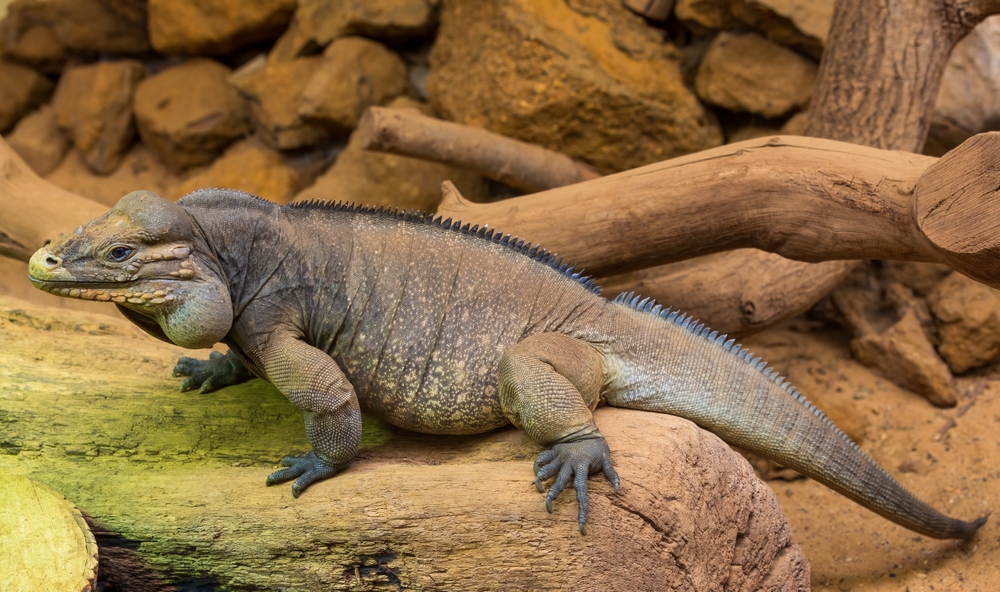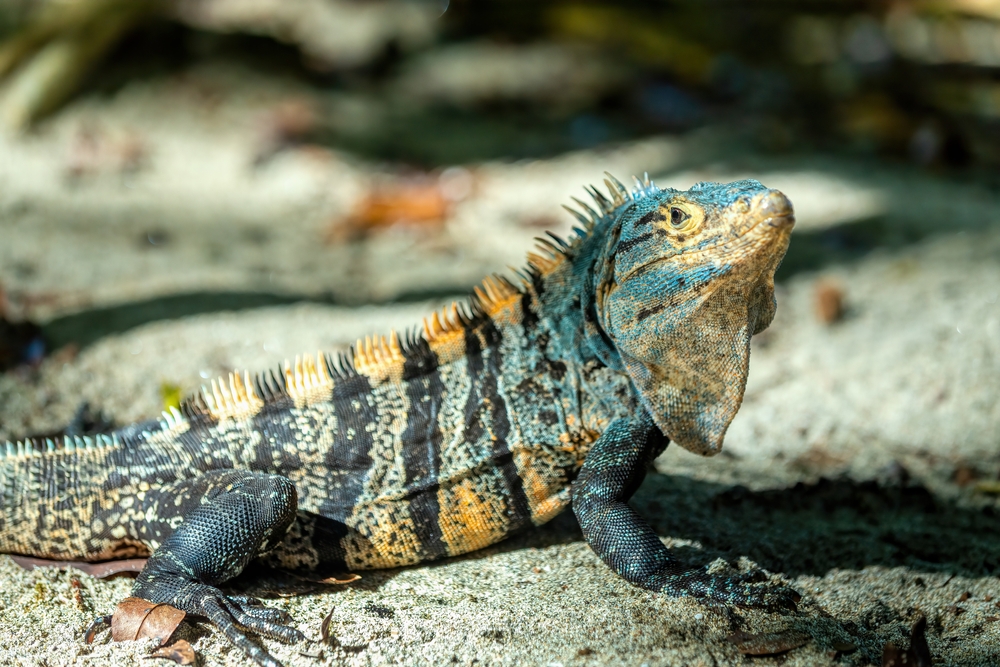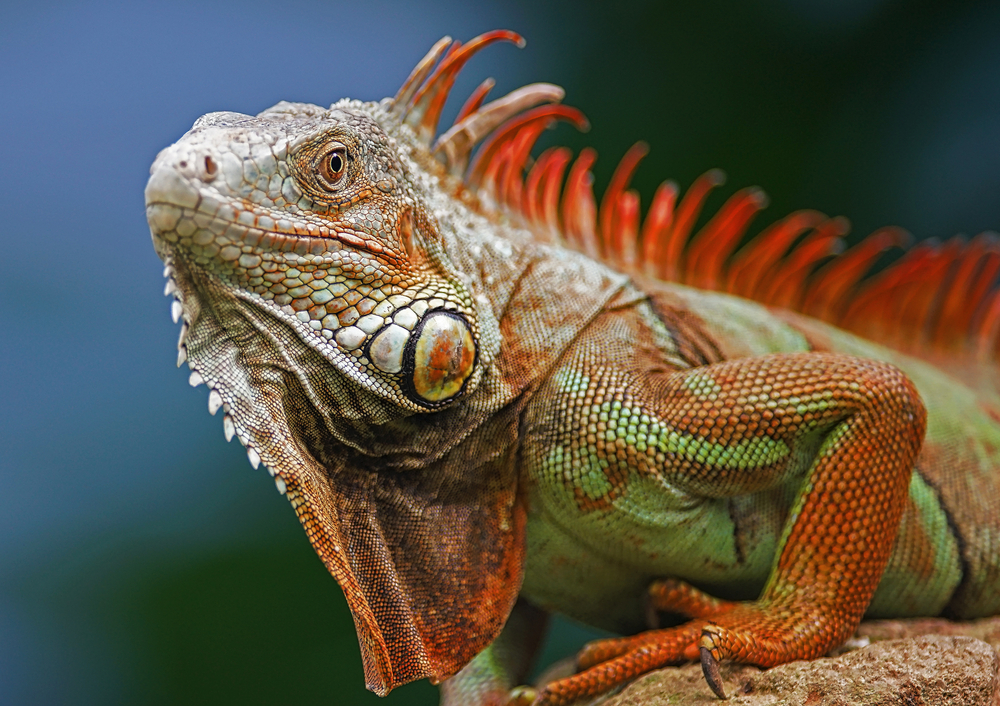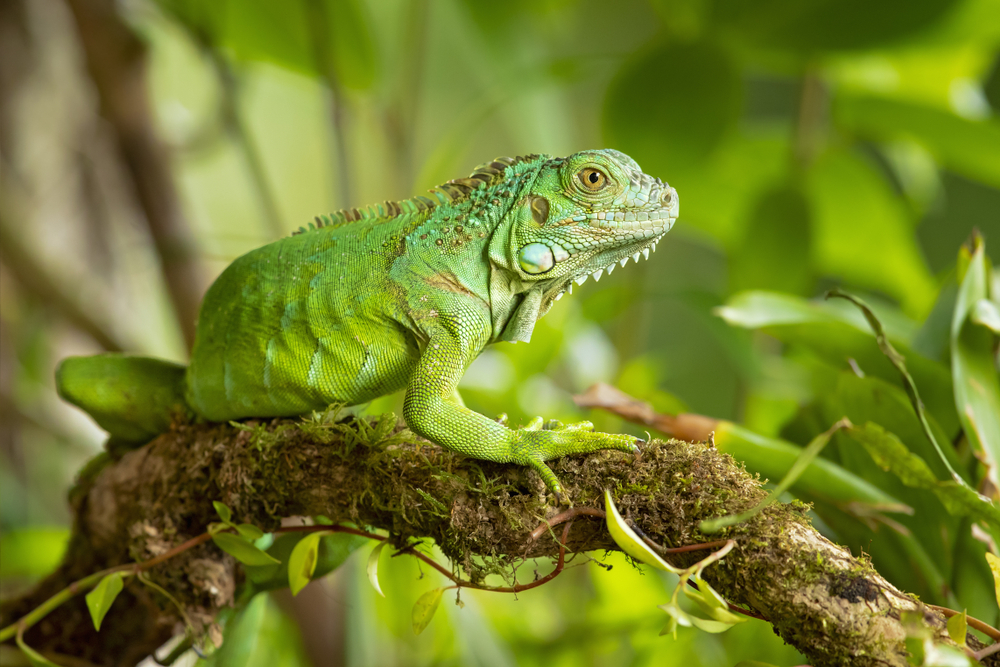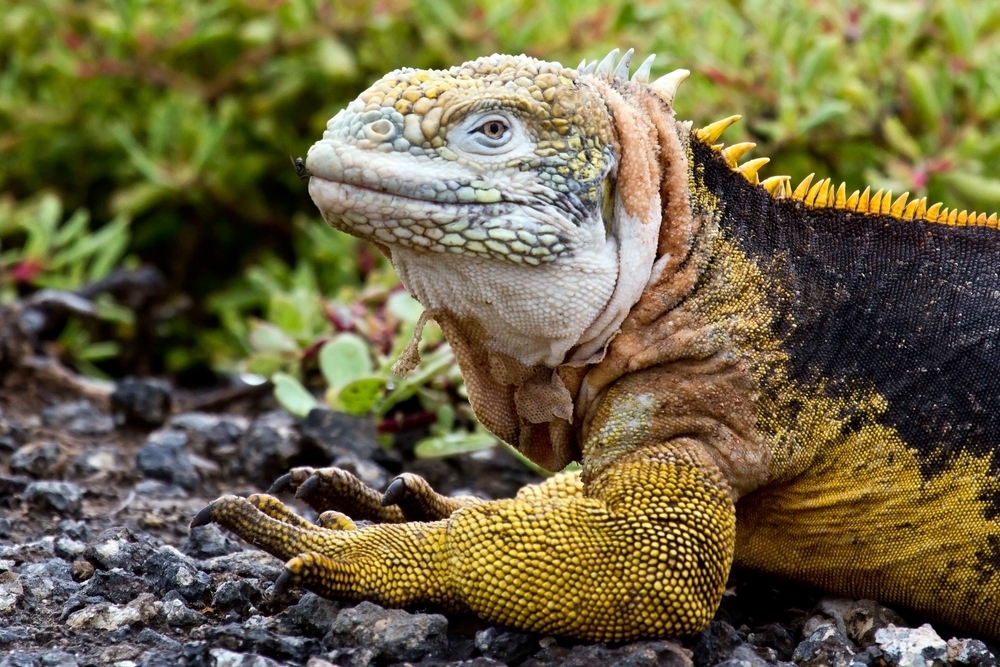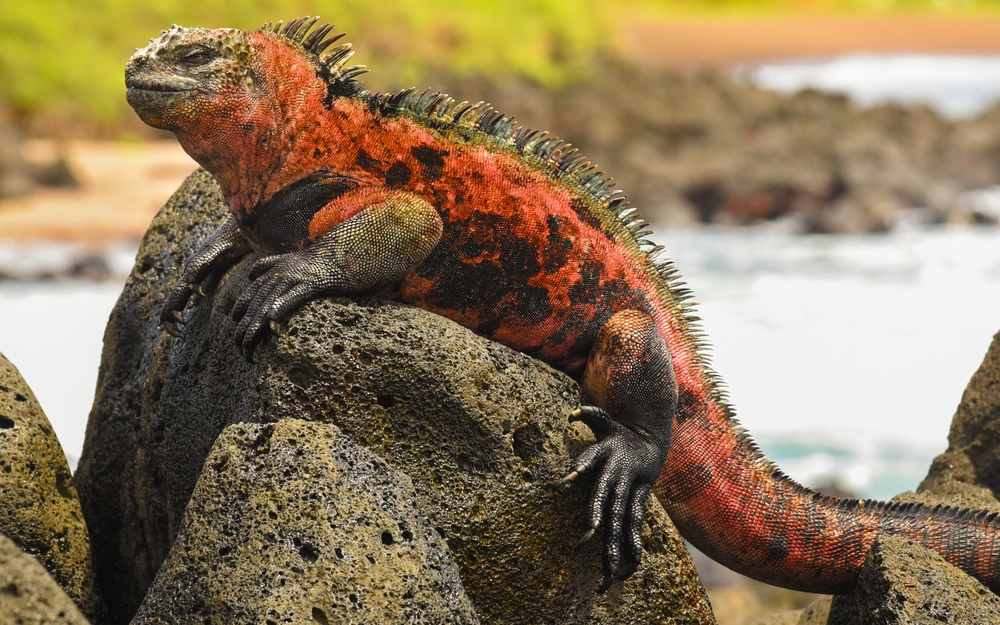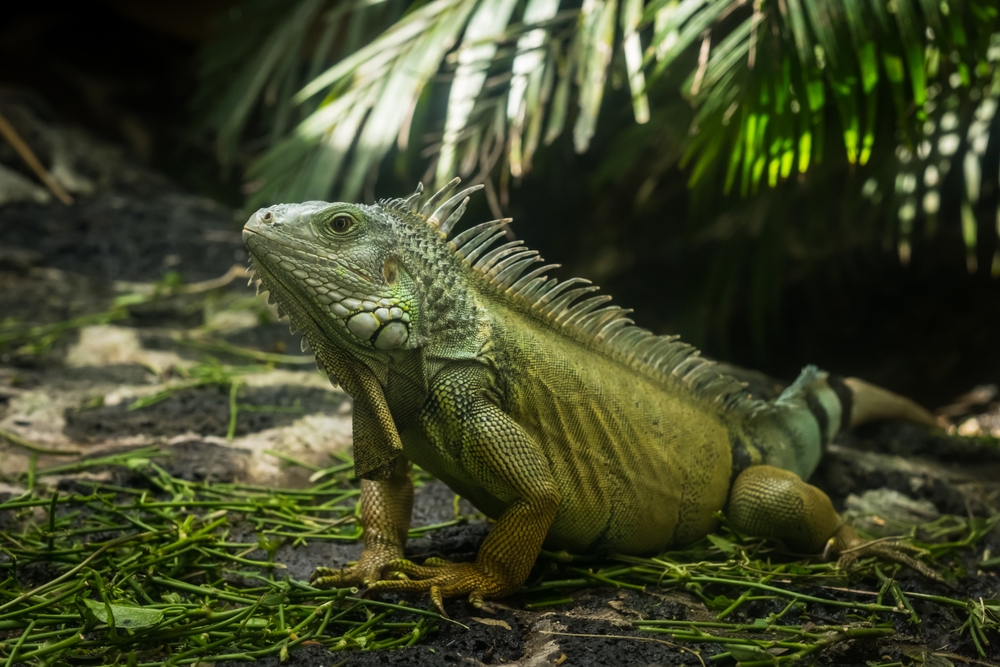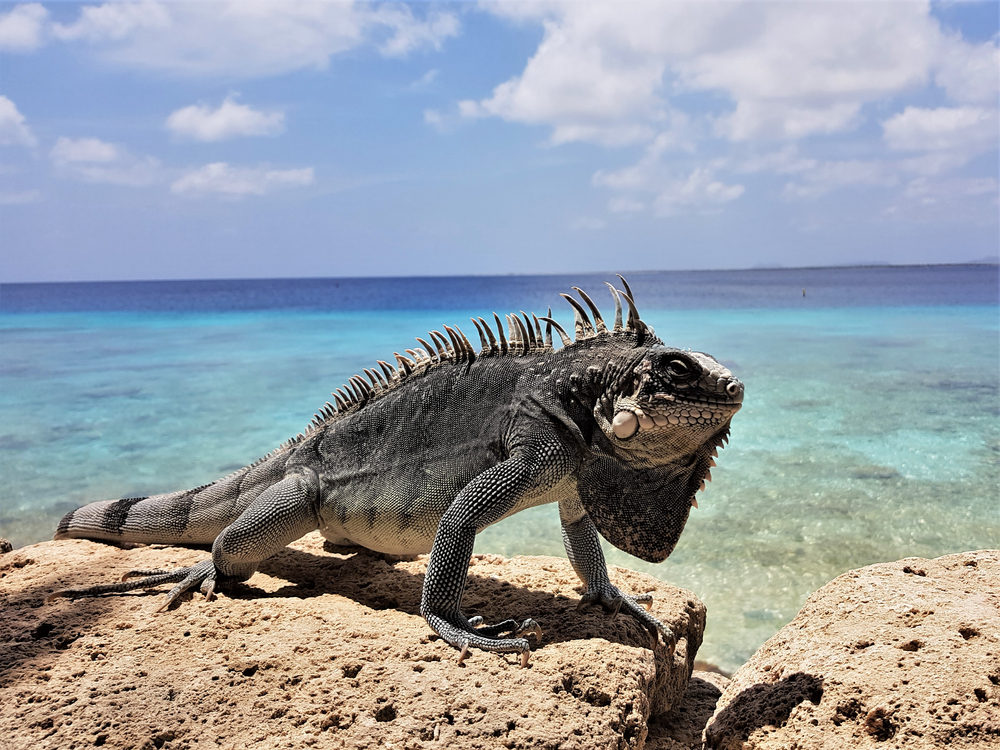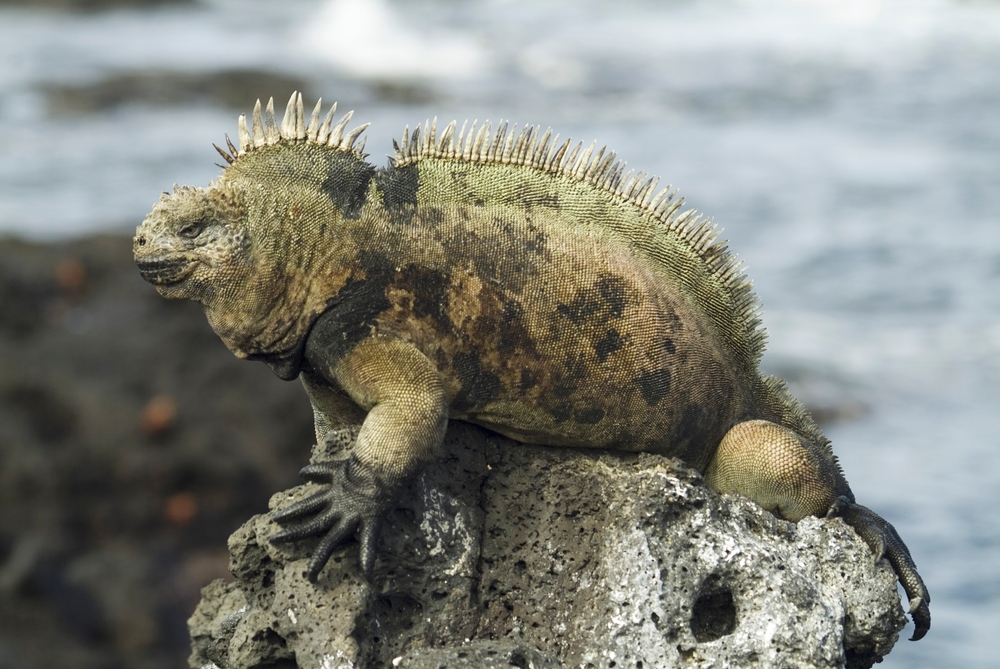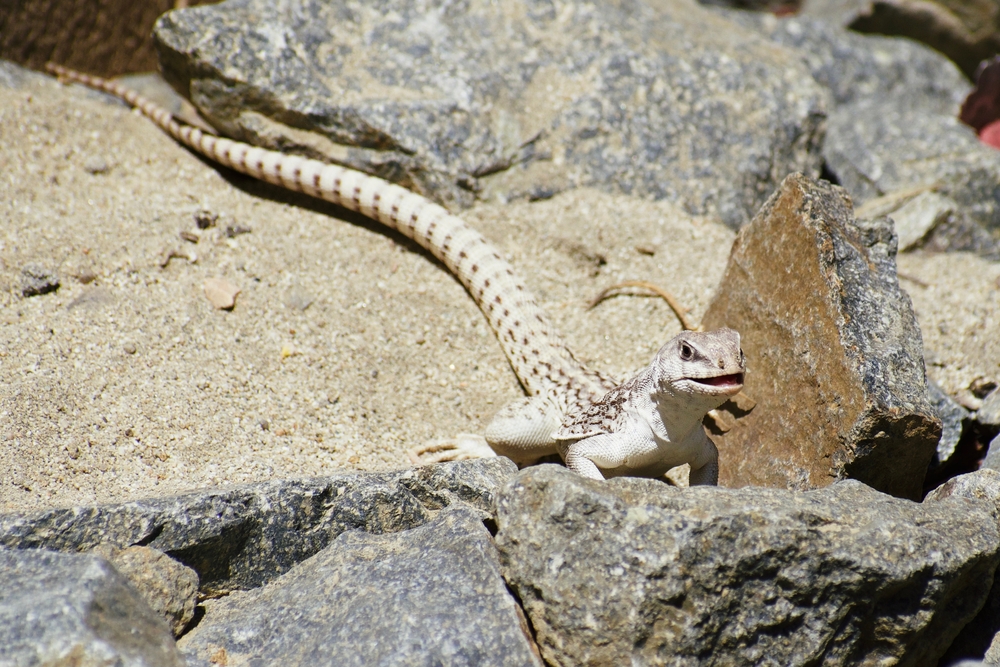About
#Reptile
The rhinoceros iguana is a large, rugged-looking lizard native to the Caribbean island of Hispaniola, which includes both the Dominican Republic and Haiti. It is named for the horn-like bony protrusions on its snout, resembling the horns of a rhinoceros. These growths are most prominent in males and are used in dominance displays and territorial interactions.
Adults typically measure 90–130 cm (3–4.3 feet) in total length and can weigh up to 10 kg (22 lbs), making them one of the largest species of rock iguanas. Their coloration ranges from gray to brownish-olive or slate blue, which helps them blend into the rocky, scrub-filled coastal habitats they inhabit. Their muscular bodies, crest of spines along the back, and heavy jowls give them an imposing appearance.
Rhinoceros iguanas are diurnal and primarily herbivorous, feeding on leaves, flowers, fruits, and the occasional insect or carrion. They play a critical ecological role as seed dispersers and help maintain the balance of native vegetation.
These iguanas are oviparous, with females laying 5–20 eggs per clutch in sandy or loose soil burrows. After laying, the female may guard the nest for several days. Hatchlings emerge after approximately 90 days and are independent from birth.
Rhinoceros iguanas are territorial, especially during the breeding season, when males may perform head-bobbing, dewlap extension, and engage in physical combat to establish dominance. Despite their intimidating look, they are generally calm and slow-moving unless provoked.
The species is currently listed as Vulnerable, facing threats from habitat destruction, invasive predators, and human encroachment. Conservation programs include habitat protection, breeding initiatives, and educational outreach in the Dominican Republic.
The rhinoceros iguana’s scientific name is Cyclura cornuta, and it belongs to the family Iguanidae.
Threatened:
Extinct
Critically Endangered
Endangered
Vulnerable
Near Threatened
Least Concern



































































